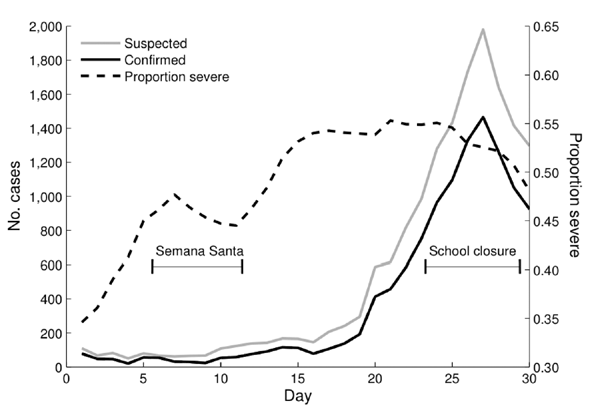Volume 16, Number 9—September 2010
Letter
Mobile Messaging as Surveillance Tool during Pandemic (H1N1) 2009, Mexico
Figure

Figure. Proportion of severe cases of influenza-like illness (ILI) in Mexico, April 2009, from unstructured supplementary service data survey and confirmed and suspected cases of pandemic (H1N1) 2009 from Sistema Nacional de Vigilancia Epidemiológica. Suspected cases of pandemic (H1N1) 2009 are ILI cases for which no laboratory confirmation was possible. The daily proportion of reported severe cases and daily counts of confirmed and suspected cases of pandemic (H1N1) 2009 were smoothed by using a 5-day moving average.
Page created: August 28, 2011
Page updated: August 28, 2011
Page reviewed: August 28, 2011
The conclusions, findings, and opinions expressed by authors contributing to this journal do not necessarily reflect the official position of the U.S. Department of Health and Human Services, the Public Health Service, the Centers for Disease Control and Prevention, or the authors' affiliated institutions. Use of trade names is for identification only and does not imply endorsement by any of the groups named above.